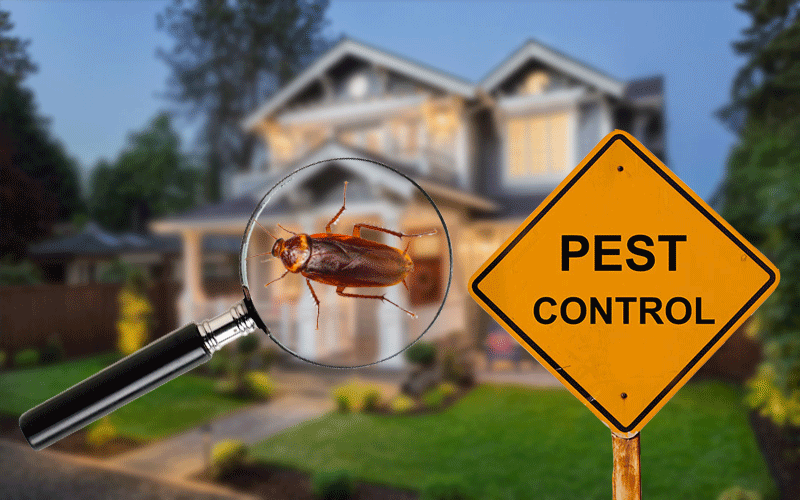Specialist A1 Charlotte Bed Bug Exterminator - High Quality Service Assured
Specialist A1 Charlotte Bed Bug Exterminator - High Quality Service Assured
Blog Article
Bed Insect Therapy Breakdown: Contrasting Chemical Vs. Non-Chemical Solutions
In the world of insect control, specifically when managing the persistent concern of bed bugs, the selection in between chemical and non-chemical treatment solutions can be a crucial one. Both techniques provide distinct benefits and disadvantages, affecting factors such as efficiency, safety factors to consider, and overall cost. By analyzing the nuanced information of each approach, a more clear understanding of which course to go after in resolving a bed pest infestation can be obtained.
Efficiency of Chemical Therapies
Chemical therapies for bed insect infestations have been widely identified for their quick and potent efficacy in getting rid of these insects. When taking into consideration the effectiveness of chemical treatments, it is crucial to comprehend that they can offer a quick and detailed remedy to a bed bug trouble.
Moreover, chemical therapies have the benefit of supplying recurring impacts, meaning that they can remain to eliminate bed pests also after the initial application. This residual activity is particularly useful in combating any kind of potential re-infestations. In addition, the quick action of chemical treatments can bring relief to people facing extreme bed pest infestations, allowing them to restore control of their home promptly.
Safety Concerns With Chemical Solutions
When utilizing chemical solutions for bed bug treatment is making sure the safety and security of occupants and the atmosphere,One important facet that calls for cautious consideration. While chemical treatments can be reliable in eradicating bed insects, they might position dangers if not managed properly. Among the primary security worry about chemical remedies is the prospective damage they can trigger to human health and wellness. Direct exposure to particular chemicals utilized in bed bug therapies can lead to breathing problems, skin irritability, or other unfavorable responses, especially in individuals with pre-existing conditions or level of sensitivities. Additionally, incorrect application or dosage of chemical pesticides can cause hazardous residues lingering in the treated area, posing long-lasting health risks to occupants.
Additionally, the environmental influence of chemical services is an additional considerable factor to consider. Some pesticides made use of in bed insect therapies may be damaging to useful insects, wild animals, and environments if they leach right into the dirt or water systems. It is vital to make use of chemical treatments sensibly, complying with security standards, and considering less hazardous options to alleviate these threats and make certain the risk-free and efficient management of bed bug problems.
Benefits of Non-Chemical Approaches
Taking into consideration the potential safety worries and environmental impact related to chemical services for bed bug therapy, discovering non-chemical techniques provides an encouraging option with several unique advantages. Non-chemical techniques offer a more secure choice for families, american pest control particularly those with kids, people, or family pets conscious rough chemicals. These approaches eliminate the risks of exposure to toxic substances, reducing the potential for adverse health and wellness results. Additionally, non-chemical treatments are eco-friendly, as they do not add to air or water contamination, making them a sustainable selection for parasite control.
Additionally, non-chemical options can be efficient in targeting bed pests, consisting of hard-to-reach locations where chemical treatments may not penetrate. Approaches such as heat therapy, vacuuming, vapor cleaning, and bed mattress encasements give complete obliteration without making use of harmful chemicals. In addition, non-chemical techniques can be less turbulent, requiring minimal prep work and enabling quicker reentry into dealt with areas. In general, choosing non-chemical bed bug treatment approaches not only focuses on safety and ecological protection however additionally guarantees thorough and effective parasite control.
Limitations of Non-Chemical Treatments

Additionally, non-chemical treatments usually useful content require multiple applications to accomplish successful elimination. This can be lengthy and might not constantly ensure total removal of all bed pests and their eggs, specifically in hidden or hard-to-reach locations.
Moreover, the success of non-chemical therapies greatly relies upon appropriate execution and thoroughness, which can be challenging for individuals without expert experience. Inadequate application of non-chemical techniques might cause incomplete removal, causing relentless infestations and the requirement for added treatments.
As a result, while non-chemical treatments have their advantages, it is necessary to recognize these limitations and consider them when establishing one of the most efficient approach for handling bed insect problems.
Cost Comparison: Chemical Vs. Non-Chemical Options
Given the limitations associated with non-chemical treatments, a crucial facet to examine in the context of bed pest administration is the cost comparison in between chemical and non-chemical options. In contrast, non-chemical treatments like heat therapy or vapor can be a lot more pricey, with costs varying from $1,000 to $6,000 for an entire home. While the first expense of chemical treatments might seem reduced, numerous therapies might be called for to completely remove the problem, potentially enhancing the overall price.
Verdict

Considering the possible security problems and ecological impact associated with chemical remedies for bed insect treatment, discovering non-chemical strategies offers a promising option with a number of distinct benefits.Provided the restrictions connected with non-chemical treatments, a vital aspect to evaluate in the context of bed pest administration is the cost comparison between chemical and non-chemical choices. read In comparison, non-chemical treatments like warmth therapy or vapor can be extra pricey, with expenses varying from $1,000 to $6,000 for a whole home. While the preliminary expense of chemical therapies might seem lower, several therapies may be required to fully get rid of the problem, possibly increasing the overall expense.In conclusion, when comparing chemical and non-chemical bed pest treatment alternatives, it is vital to take into consideration performance, security, advantages, restrictions, and price.
Report this page